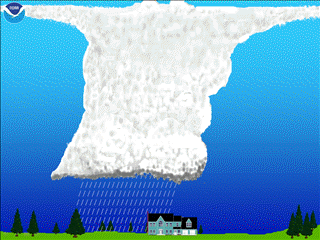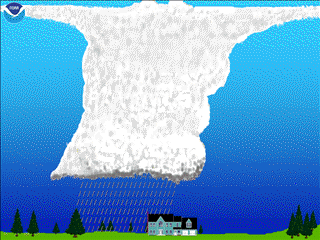ORANGE COUNTY, Fla. – Florida’s dry season runs from late October to mid-May, however, the weather during this time shapes how bad wildfire season could be. Lightning is the top cause of wildfires across the state.
“Being in Florida, we are the lightning capital of North America just because of our sea breezes and being on the peninsula,” said Wil Kitchings, Forest Area Supervisor for Orange County.
Years ago, crews would stake out fires on top of a fire tower. They searched for smoke, then spent hours trying to find it. Then, they evolved to use cameras and planes.
“Typically, after a lightning storm we’ll put a pilot up the next day, or day after, you know two days out,” said Kitchings.
Now, The Florida Forest Service has a new tool to fight wildfires. A group of researchers with the Fire Neural Network at the University of Florida is working with the Forest Service and the National Science Foundation to get results with a High-Risk-Lightning detector.
“We tell them which lightning strike to pay attention to and where that lightning strike specifically happened,” said Imre Bartos, Ph.D., Chief Technology Officer, Fire Neural Network.
According to the Fire Neural Network, this happens in about 40 seconds. “This detector detects a lightning strike then we combine this information with what we know about the weather, what we know about the environment, and use artificial intelligence to narrow down the options and find out where exactly this will happen,” said Bartos, “The idea is that when a human has to find a fire, you have to wait for it to grow. You have to wait for the smoke you have to be nearby. It takes time and time is of the essence. Fires multiply in size every five minutes.”
There could be hundreds of lightning strikes in just minutes. The Fire Neural Network told News 6 that its technology can pinpoint the one strike likely to cause a wildfire.
“Normal lightning is really quick, so it cannot ignite a fire, and there are these special strikes called long continuing current strikes that are very long, 1,000 times longer, so they cause 1,000 more heating and they’re much more likely to start a fire,” said Istvan Kereszy, Ph.D., CEO of Fire Neural Network.
 Figure 1 Figure 1 |
 Figure 2 |
While most flashes consist of leader(s)/return stroke(s) combinations (Figure 1), some flashes contain what is called continuing current. Rather than charge flowing in one or more separate return strokes, charge flows continuously over a longer period of time through the lightning channel (Figure2).
“On our end, it’s better for us,” according to Kitchings. “We used to get lightning data from BLM, the Bureau of Land Management, and we got every lightning strike there was.”
The Fire Neural Network said 10 of its High-Risk-Lightning detectors cover Central Florida, including Orlando, Lake County, Bunnell and the Tiger Bay State Forest. The technology is also being used to help fight wildfires in California and Australia.
The High-Risk-Lightning detectors are fully autonomous and are meant to work anywhere. Each device has its own internet and solar panel so they are not hooked up to the grid.
The Fire Neural Network is also working with the Florida Forest Service and the U.S. Department of Agriculture to launch an autonomous drone. The drone is deployed after a lightning strike is detected. Its infrared camera and live footage would notify the team if there is smoldering so they can alert crews.
Get today’s headlines in minutes with Your Florida Daily: